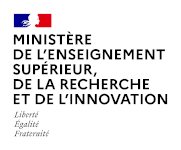1st International Workshop on the Digital Preservation of Research Methods and Artefacts
25 juillet 2013 – Indianapolis, États-Unis
Background
The process of research in both the sciences and humanities has, and continues, to undergo significant change in addressing the needs of our ever more digital world. Researchers are adapting to the opportunities presented by working at scale with increasingly large datasets, creating methodologies and tooling for assistance and automation, and undertaking multi-disciplinary collaboration with colleagues and specialisations distributed around the globe.
This brings with it challenges for the capture, publication, and preservation of research output. In this world a single document or journal paper — perhaps by a single author with a narrow subject focussed bibliography — is no longer sufficient for useful encapsulation of the complete research output. This is particularly the case when considering the need to disseminate, reproduce and reuse methods and findings as the foundation of ongoing scholarly research and academic discourse.
Workshop Objectives
This workshop will consider how Digital Libraries can adapt to meet these needs. Starting with the complex digital objects needed to store the multi-format artefacts such as datasets, workflows, results and publications, the workshop will discuss how they they be captured, stored, associated, retrieved, and visualised. Can, or should, Digital Libraries address the needs of scale presented by big data directly and wholly, or play a well-defined role within an ecosystem of interoperable services? What are the challenges for curation of dynamic resources often more akin to software than documents, where iterative experiments comprise of changing datasets, codes, and authors? What additional research context should be preserved in addition to traditional dissemination mechanisms? What models and semantics can capture this context, and what role can provenance, versioning, and dependency analysis play in their preservation? How will researchers access and reuse these preserved artefacts?
…






